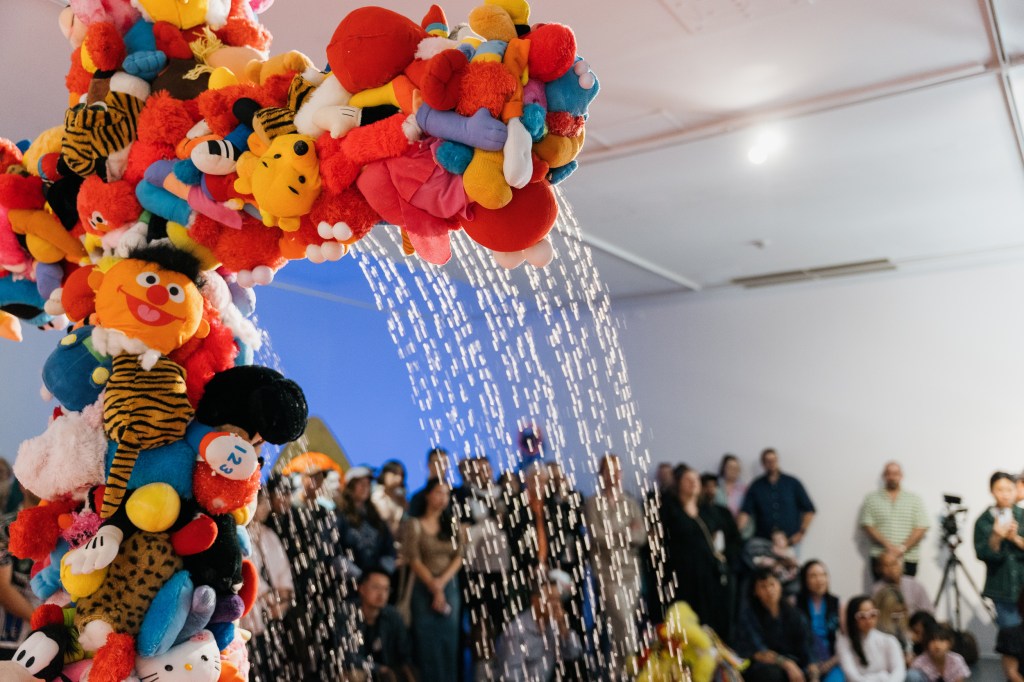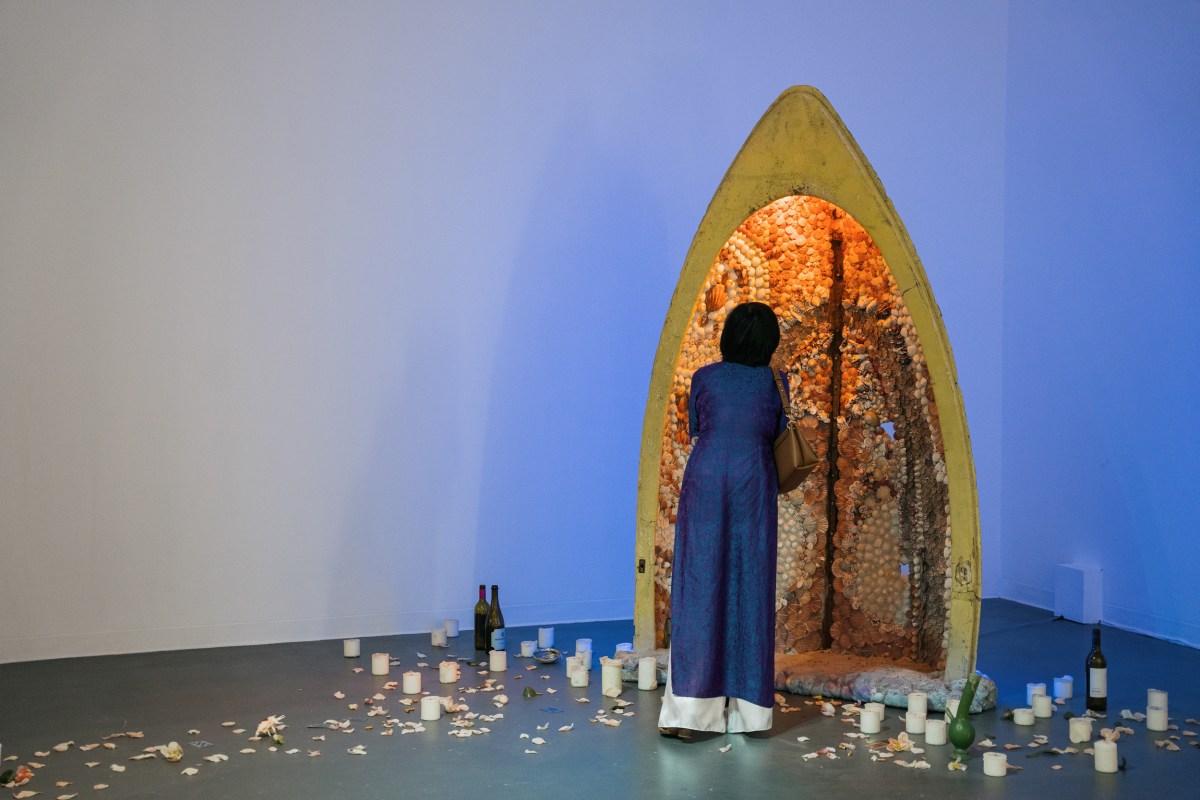Adelaide Contemporary Experimental’s exhibition Studios: 2023 is a vivid, haunting and emotionally powerful collection that takes the viewer through a journey of diaspora, family history and connection to the natural world. The exhibition contains commissioned works by five South Australian emerging artists supported by The ACE Studio Program. While each work is stylistically distinctive, the exhibition is unified by its focus on the materiality of human existence and its relationship with the natural world.
Opening with Treaty (2023) by Brad Darkson, this multi-channel video engages with Yothu Yindu’s music to explore the historic tensions surrounding several Australian Government actions. Darkson’s artwork is especially powerful in light of the recent referendum on the Voice. Through sound and moving images, we’re asked to consider the implications of the Australian Government’s broken promises to First Nations Peoples over several decades, and what this means for Australia as a settler colonial nation.
The next work, Sinner’s Grotto (2023), by Teresa Busuttil, makes use of a salvaged rowboat coated in thousands of seashells and surrounded by candles. The upright configuration of the rowboat, which is also lit from within, evokes a sense of holiness or spirituality. This is complicated by the playing cards and cigarette butts that lie scattered around the constructed grotto. Inspired by her Maltese heritage and her father’s career as a drug dealer, Sinner’s Grotto speaks to both the diversity of our society and the ways in which family history and culture follow us into the present.
Similarly, Truc Truong’s Buoyancy (2023) also uses mixed materials to explore themes of diaspora, religion and colonisation. Using soft toys to construct a crucifix surrounded by a fountain and model koi fish, Buoyancy combines a sense of playfulness and innocence with an underlying feeling of sadness and grief. The familiar soft toys depicting characters from The Muppets and Sesame Street sit in contrast with the sombre iconography of the cross and the vivid red of the fountain, creating a sense of unease despite the kitsch elements.

Jennifer Mathew’s Waiting to get cooked (2023) is equally unsettling. Composed of three sculptures, Waiting to get cooked evokes the sterile qualities of a medical waiting room, as well as the Australian tradition of frying an egg on a car on a hot day. The fried eggs that contrast against the stark metal ask the audience to confront the impact of human-made climate change and our disconnection from our natural environment.
The final exhibit, One Day I’m Never Gonna See Your Face Again (2023), by Georgia Button explores her family history in rural South Australia through a video of her grandmother’s home and garden, focusing on pieces of significance in her grandmother’s life. The shifting images showcase domestic and familial items representing a bygone era of Australian regional communities, while also speaking to the ways in which we carry the spirit of our forbears’ lives with us.
Read: Music review: Chopin and the Mendelssohns, Adelaide Town Hall
Each work in Studios 23 is unique while complementing the others. The exhibition space flows smoothly, encouraging a sense of reflection and meditation on the themes and styles of each individual artist.
This moving and thought-provoking exhibition is not to be missed and speaks to the vitality of the emerging South Australian visual arts scene.
Studios: 2023 runs from 11 November to 16 December 2023 at Adelaide Contemporary Experimental (ACE); free.
Curators: Rayleen Forester (Associate Curator, ACE) and Nanette Orly (Head of Curatorial and Collections, Murray Art Museum Albury)
The ACE Studio Program is an emerging artists program that provides five fully-supported, rent-free CBD-based studios for South Australian artists.
This review is published under the Amplify Collective, an initiative supported by The Walkley Foundation and made possible through funding from the Meta Australian News Fund.





